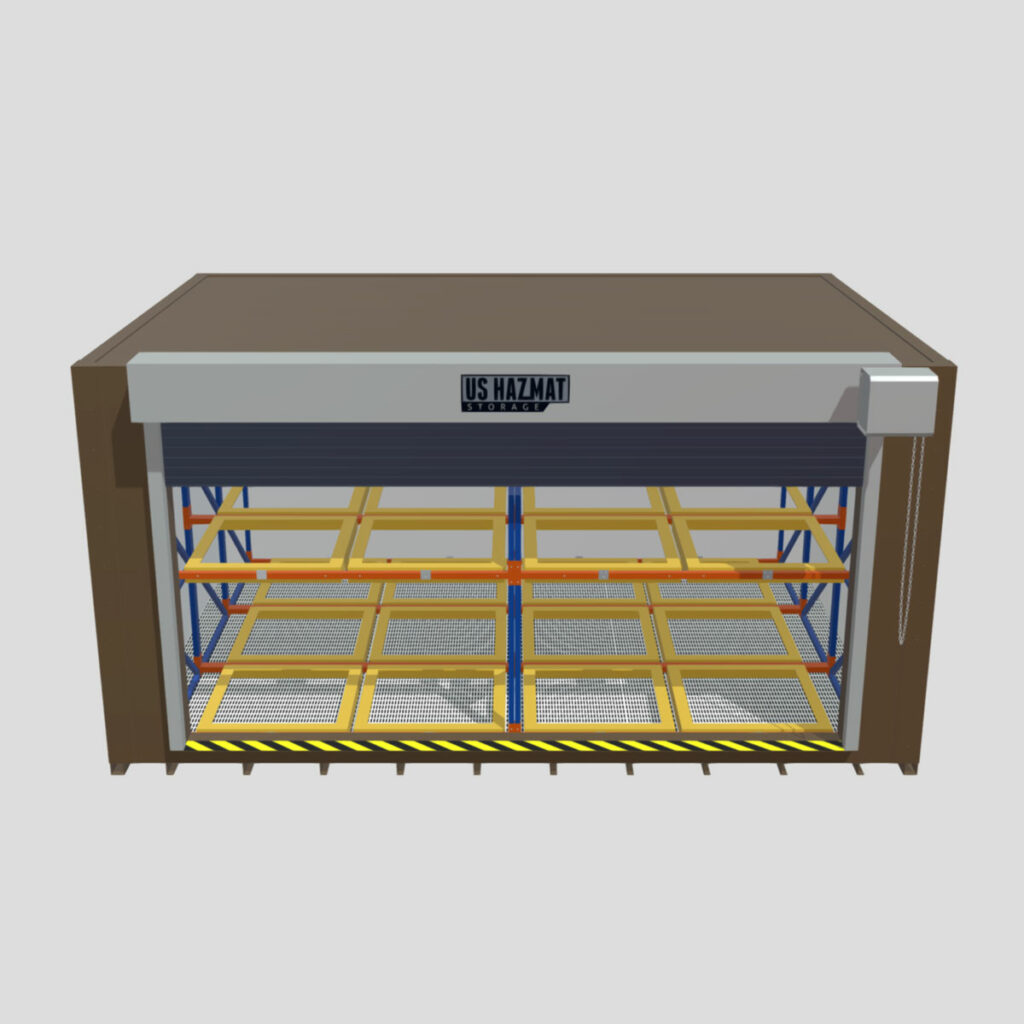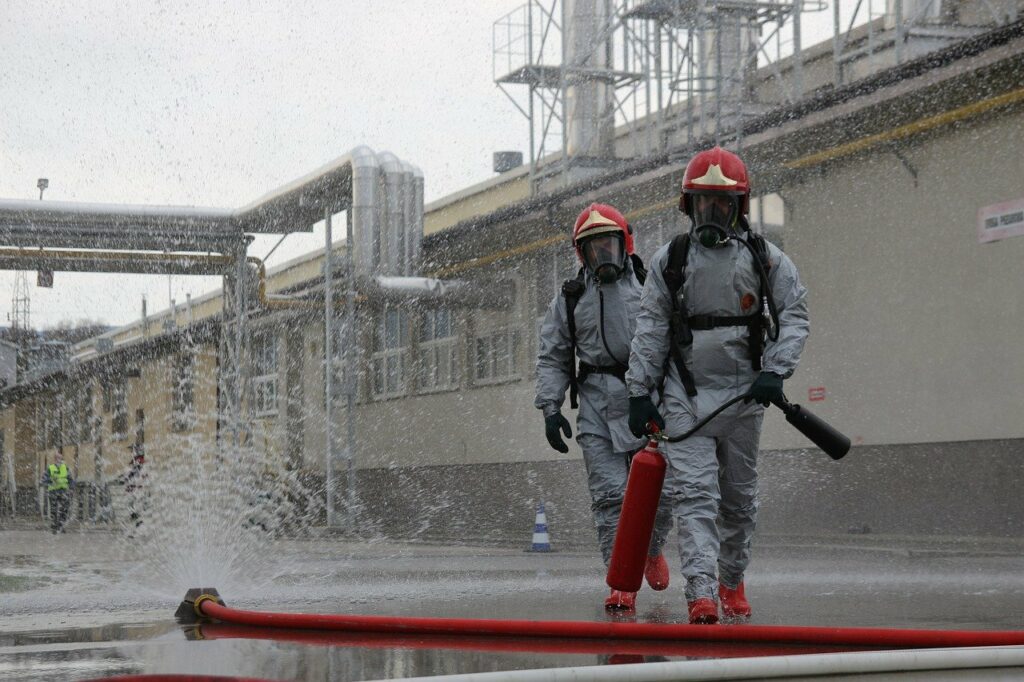While more commonly known as a powerful catalyst in agricultural fertilizers, anhydrous ammonia is also a powerful industrial refrigerant. Food manufacturers and processors rely on large quantities of anhydrous ammonia to prevent ingredients from spoiling or deteriorating. Many of your favorite food products, like dairy, ice cream and savory select cuts of meat would not reach your kitchen table without efficient refrigeration. But anhydrous ammonia can be detrimental to worker health and our environment if not properly stored. Our fire-rated chemical storage lockers can provide turnkey storage of potentially toxic and flammable refrigerants. Preserving ample supplies of anhydrous ammonia also prevents residual waste and streamlines production processes with a centralized storage location.
How to Store Anhydrous Ammonia

Anhydrous ammonia refrigeration works similar to most traditional air conditioners found in your car or home. Initially, the vapor is compressed before the heated refrigerant is moved to the condenser where it releases the heating and transforming back to liquid form. After the liquid conversion, the ammonia boils and moves to the expansion valve into a low pressure space. This flash gas then cools the ammonia so it can transfer the heat away once again. For all its simplicity, anhydrous ammonia still comes with glaring risks. This industrial refrigerant is toxic and should be handled with extreme care. Accidental inhalation of ammonia can lead to lung irritation and respiratory injuries. Furthermore, most refrigerants are also corrosive.
Whenever handling dangerous materials, it’s always important to pay close attention to its classification and naming convention. When in doubt, personnel should reference the product’s safety data sheets, which should be readily available for all products being handled at industrial facilities. Anhydrous ammonia should also be stored in well-ventilated areas in temperatures not exceeding 120 F. Manufacturers should never store this type of chemical in plastic containers, as it is corrosive. OSHA recommends using only stainless teel, carbon steel or black iron containers. Additionally, refrigerant chemicals should be kept away from ignition sources.
The Perils of Improper Storage

Recently, a California food processor reached a settlement with the EPA for claims of Violations of the Clean Air Act and the Community Right to Know Act. For those not family with this standard, the CAA controls pollution nationwide by enforcing compliance programs. Altogether, these alleged violations pertain to the company’s anhydrous ammonia refrigeration system that is used for cheese production and storage. Under the settlement, the company will pay more than $200,000 in civil penalties. Additionally, the company must make significant safety improvements to ensure federal compliance.
It is far too late when most facilities realize their deficient chemical storage practices. The EPA or OSHA has already admonished non-compliant facilities with civil penalties and fines before corrective measures can be applied. Don’t become another statistic to rogue chemical storage practices. Our fire-rated chemical storage lockers can accommodate large quantities of anhydrous ammonia and other powerful refrigerants. Optional climate control and standard fire suppression systems can prevent small leaks or chemical escapes from becoming larger fires and incidents. Contact us today for a free quote and consultation!


